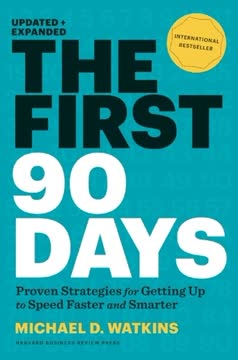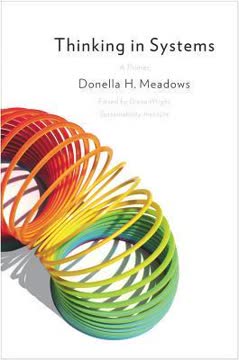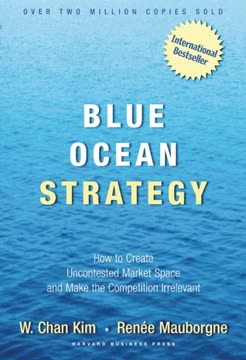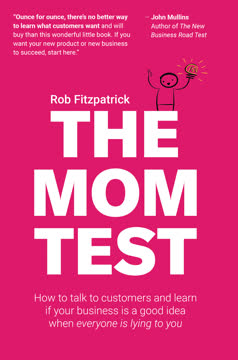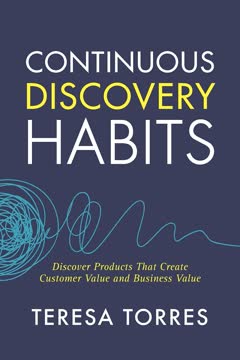重点摘要
1. 好的策略是出乎意料且具有连贯行动的
一个好的策略有一个我称之为核心的基本逻辑结构。策略的核心包含三个要素:诊断、指导方针和连贯的行动。
诊断是关键。 好的策略始于对当前挑战的清晰评估。这个诊断通过识别情况的关键方面来简化复杂的现实。然后,指导方针概述了克服诊断中识别的障碍的总体方法。*后,连贯的行动涉及支持指导方针的协调步骤。
出乎意料的力量。 有效的策略通常因为对手没有预料到而获得优势。这种出乎意料的元素来自于深刻的诊断和创造性的问题解决,而不仅仅是保密。好的策略通过协调政策和行动,创造出竞争优势或强大的问题解决效果。
好的策略的例子:
- 汉尼拔在坎尼的胜利:预见了罗马人的行为并设计了协调的行动
- 沃尔玛的零售策略:整合的商店网络、配送中心和信息系统
- 史蒂夫·乔布斯领导下的苹果转型:简化产品线并专注于设计和用户体验
2. 糟糕的策略用空洞的语言掩盖了缺乏明确目标的事实
糟糕的策略随波逐流,用流行的口号代替洞察力。
糟糕策略的标志:
- 空洞:过度使用流行词汇和行话来掩盖缺乏实质内容
- 未能面对挑战:避免识别和分析障碍的艰苦工作
- 将目标误认为策略:陈述愿望而没有克服困难的计划
- 糟糕的战略目标:不切实际或不连贯的目标,未能解决关键问题
糟糕策略的常见原因:
- 不愿做出艰难的选择
- 依赖模板式的策略制定
- 过分强调“愿景”而没有具体计划
- 新思想式的积极思维,忽视现实世界的障碍
糟糕的策略往往源于组织惯性、政治妥协或领导者想取悦所有人的愿望。它也可能源于对策略的误解,将其与目标设定或财务预测混淆。
3. 策略中的力量来源:杠杆、近端目标和设计
为了实现杠杆作用,策略家必须洞察一个能放大集中精力和资源效果的支点。
杠杆 涉及识别和利用支点,通过集中努力产生超出预期的结果。这需要对情况的深刻理解和创造性的问题解决,以找到意想不到的优势。
近端目标 是足够接近的可行目标。它们提供明确的方向,有助于协调问题解决的努力。好的近端目标将更大的挑战分解为可管理的步骤。
策略中的设计 涉及创建一个资源和行动的连贯配置,从而产生优势。就像设计一台高性能机器一样,好的战略设计协调多个元素,使其高效协同工作。
战略设计的关键要素:
- 部件的相互调整
- 关注关键互动
- 在整合和灵活性之间取得平衡
- 适应竞争环境
4. 有效的策略利用变革浪潮和行业转型
要生成一个策略,必须放下纯粹演绎的舒适和安全,进入归纳、类比、判断和洞察的更模糊的水域。
乘风破浪。 成功的策略往往利用技术、市场或法规的更广泛趋势和转型。这需要领导者对新兴模式有敏锐的感觉,并能够预见二阶效应。
识别拐点。 战略机会通常在行业发生重大变化期间出现。这些拐点可以打破现有的竞争地位,并启用新的策略。
利用变革的战略例子:
- 思科系统在网络设备领域的崛起
- 苹果通过iTunes和iPod改变音乐产业
- 亚马逊在电子商务和云计算领域的开创性工作
吸引态。 理解一个行业正在向哪个长期平衡状态发展可以提供有价值的战略洞察。这一概念帮助领导者区分暂时的波动和行业结构的根本性变化。
5. 惯性和熵是战略变革的主要障碍
即使变革计划全速运行,改变一个大公司的基本运作可能需要多年时间。
组织惯性的类型:
- 常规惯性:根深蒂固的流程和习惯抵制变革
- 文化惯性:深植的信念和价值观阻碍适应
- 代理惯性:利益相关者对变革的抵制影响组织
组织中的熵 指的是在没有积极维护的情况下,秩序和焦点随着时间的推移而退化。这需要领导者不断努力加强目标、结构和方法。
克服惯性和熵:
- 简化:剥离不必要的复杂性
- 分解:打破政治联盟并暴露低效
- 分类:识别需要关闭、修复或作为新结构核心的单位
- 挑战:设定雄心勃勃的目标以建立新的习惯和常规
领导者必须认识到,改变大型组织是一个极具战略性的挑战,需要诊断、指导方针和连贯的行动。
6. 科学思维对制定和测试策略至关重要
策略就像一个科学假设,是对世界如何运作的有根据的预测。
策略作为假设。 好的策略就像科学理论,是对在特定情况下什么会起作用的可测试预测。它们应该基于仔细的观察和分析,但也涉及创造性的洞察。
实证方法。 有效的策略家像好的科学家一样,密切关注现实世界的结果,并愿意根据新证据修正他们的理论。这需要:
- 仔细观察结果
- 愿意承认并从失败中学习
- 不断完善战略假设
异常的重要性。 意外的结果或与普遍智慧相矛盾的现象往往指向重要的战略洞察。领导者应培养发现和调查异常的能力。
专有信息。 像科学实验一样,商业运营会生成有价值的数据。策略家应设计他们的组织以捕捉和学习这些专有信息。
7. 独立判断在策略中至关重要,尤其是在市场泡沫期间
战略性思维就是比别人少一些短视。
克服认知局限。 好的策略家会发展技术来对抗自然的人类偏见和思维局限。这包括:
- 制作清单以克服遗忘并强制优先排序
- 使用心理模型和框架来结构化复杂问题
- 培养“专家小组”来批评想法
社会从众的危险。 在市场泡沫或过度乐观时期,领导者保持独立判断至关重要。这需要:
- 理解行业经济的基本面
- 识别历史例子中的模式
- 抵制随大流的诱惑
内部视角与外部视角。 策略家必须平衡对其特定情况的详细了解(内部视角)与更广泛的模式和统计数据(外部视角)。过度依赖内部视角可能导致过度自信和未能从相关例子中学习。
练习判断。 好的战略思维是一种可以通过练习培养的技能。领导者应:
- 在讨论前将判断写下来
- 评估过去预测的准确性
- 不断完善他们评估情况和做出决策的能力
最后更新日期:
FAQ
What's Good Strategy Bad Strategy about?
- Core Concept: The book distinguishes between good and bad strategies, emphasizing that good strategy involves coherent action and a clear diagnosis of challenges.
- The Kernel of Strategy: Richard P. Rumelt introduces "the kernel," consisting of a diagnosis, a guiding policy, and coherent actions, as the foundation of effective strategy.
- Real-World Examples: It includes case studies from various industries, such as Apple and the U.S. military, to illustrate successful and unsuccessful strategies.
Why should I read Good Strategy Bad Strategy?
- Practical Insights: The book offers actionable insights for leaders and managers on developing effective strategies, cutting through common business jargon.
- Identifying Bad Strategy: Rumelt helps readers recognize bad strategy hallmarks, such as "fluff" and mistaking goals for strategy, to prevent costly mistakes.
- Framework for Success: By learning the kernel of good strategy, readers can enhance their strategic decision-making capabilities in their organizations.
What are the key takeaways of Good Strategy Bad Strategy?
- Importance of Diagnosis: A good strategy starts with a clear diagnosis of the challenges faced by an organization, identifying critical issues.
- Guiding Policy and Coherent Actions: The guiding policy outlines an approach to overcoming obstacles, while coherent actions are specific steps to implement this policy.
- Focus on Leverage: Effective strategies leverage resources and actions to maximize impact, concentrating efforts on pivotal objectives.
What is the "kernel" of good strategy as defined in Good Strategy Bad Strategy?
- Three Essential Elements: The kernel consists of a diagnosis, a guiding policy, and coherent actions, each playing a crucial role in forming a comprehensive strategy.
- Diagnosis: This identifies critical challenges and simplifies the complexity of the situation, allowing leaders to focus on what truly matters.
- Guiding Policy and Coherent Actions: The guiding policy provides a framework for addressing challenges, while coherent actions are specific steps to implement the policy effectively.
How does Rumelt define "bad strategy" in Good Strategy Bad Strategy?
- Four Hallmarks of Bad Strategy: Rumelt identifies fluff, failure to face the challenge, mistaking goals for strategy, and bad strategic objectives as key indicators.
- Fluff: Vague language and high-sounding goals that lack substance, creating an illusion of strategic thinking without addressing real issues.
- Failure to Face Challenges: Bad strategy often avoids defining actual challenges, leading to a lack of focus and direction.
What are some examples of good strategy from Good Strategy Bad Strategy?
- Apple's Turnaround: Steve Jobs' return to Apple is highlighted as a case of good strategy, focusing on core offerings and simplifying the product line.
- Desert Storm: General Norman Schwarzkopf's strategy during the Gulf War is presented as an example of effective military strategy with a two-pronged approach.
- Wal-Mart's Success: Rumelt discusses Wal-Mart's strategy of serving smaller towns with low prices and efficient logistics, creating a competitive advantage.
What are the best quotes from Good Strategy Bad Strategy and what do they mean?
- "A good strategy honestly acknowledges the challenges being faced and provides an approach to overcoming them.": Emphasizes recognizing real challenges rather than glossing over them with vague goals.
- "Bad strategy is not simply the absence of good strategy.": Highlights that bad strategy has its own logic, often stemming from misconceptions about strategy.
- "The essence of strategy is a clear and differentiated point of view that supports forceful and coherent action.": Encapsulates the idea that effective strategy requires clarity and decisiveness in action.
How can I identify bad strategy in my organization using Good Strategy Bad Strategy?
- Look for Fluff: Check for vague language and high-level goals that lack actionable steps, indicating bad strategy.
- Assess the Diagnosis: Ensure the strategy includes a clear diagnosis of challenges faced; undefined challenges may lead to ineffective strategy.
- Evaluate Coherence: Analyze whether proposed actions are coherent and aligned with the guiding policy; disjointed actions indicate a lack of focus.
What role does anticipation play in good strategy according to Good Strategy Bad Strategy?
- Predicting Behavior: Anticipation involves understanding and predicting competitors' behavior and market trends, positioning organizations advantageously.
- Creating Leverage: By anticipating future developments, organizations can leverage resources and actions to maximize impact, leading to competitive advantages.
- Example of Anticipation: Toyota's investment in hybrid technology is cited as effective anticipation, foreseeing demand for fuel-efficient vehicles.
How does Good Strategy Bad Strategy suggest organizations can create focus?
- Identify Pivotal Objectives: Concentrate on a few critical objectives that can yield significant results, channeling resources effectively.
- Avoid Spreading Resources Thin: Rumelt warns against pursuing multiple goals simultaneously, as this dilutes efforts and reduces success likelihood.
- Use Proximate Objectives: Setting proximate objectives allows for actionable steps achievable in the near term, maintaining momentum and focus.
What is the significance of coherent actions in Good Strategy Bad Strategy?
- Alignment with Guiding Policy: Coherent actions must align with the guiding policy, ensuring all efforts are directed toward the same objectives.
- Building Momentum: Coherent actions create direction and purpose, fostering a culture of accountability and progress within the organization.
- Example of Coherence: Starbucks' coordinated actions to enhance customer experience and brand loyalty illustrate coherence contributing to success.
What techniques does Rumelt recommend for improving strategic thinking?
- Create-Destroy Method: Involves generating new alternatives while critically evaluating existing ones, uncovering better strategies.
- Use of Virtual Experts: Creating a mental panel of experts to critique and refine strategic ideas helps gain diverse perspectives and challenge assumptions.
- Commit to Judgments: Writing down judgments and recommendations enhances accountability and facilitates learning, encouraging reflection and improvement.
评论
《好策略坏策略》提供了一个清晰的框架,用于制定有效的策略,区分好策略和坏策略。鲁梅尔特强调了诊断、指导政策和连贯行动在制定成功策略中的重要性。书中提供了大量的真实案例和案例研究,展示了各个行业中有效和无效的策略。读者们欣赏鲁梅尔特直截了当的风格和实用的见解,尽管有些人觉得某些例子过于冗长。总体而言,这本书被认为是领导者、企业主和决策者寻求改进其战略思维和实施的宝贵资源。
Similar Books

